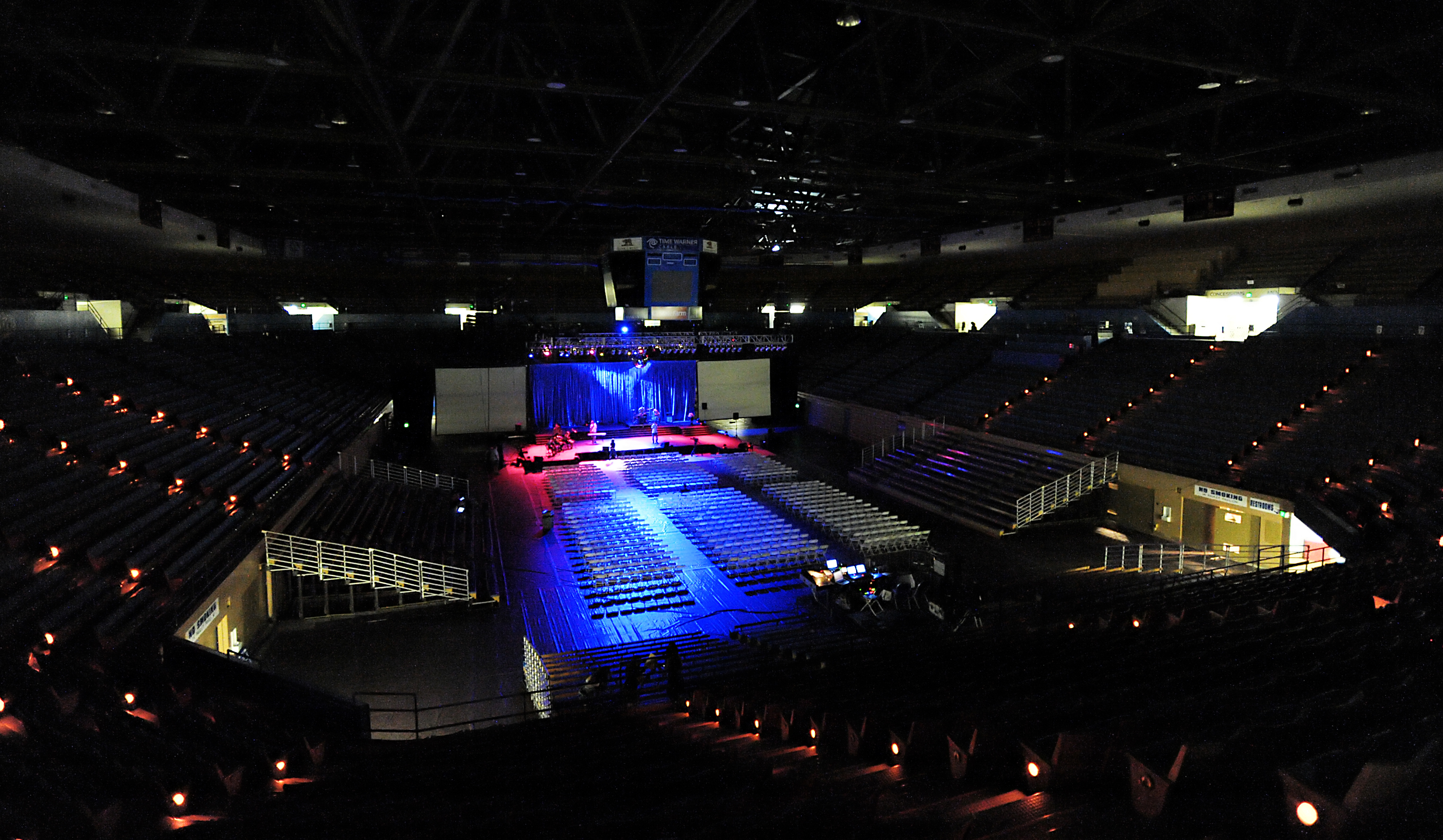This year’s Spring Sing will bring together a new list of performers, a new Company group and most notably a new venue, as 2009 marks the annual event’s move from the Los Angeles Tennis Center to Pauley Pavilion.
The change begins a new chapter for the popular student-run musical competition, which began in 1945, and will take place tonight at 8 p.m.
Spring Sing, organized by UCLA’s Student Alumni Association, has made its mark at venues on and off-campus throughout its approximately 60-year history. Past venues include Royce Hall and the Hollywood Bowl before the event moved to the tennis center in 1989, where it has remained for the past twenty years.
While it marks a stark change to move from the outdoor 5,800-seat tennis center to the indoor 10,000-seat arena, the event’s top organizers, such as Executive Director Ali Owens, stand by their decision to change locations.
“Our huge goal is to accommodate more people because Spring Sing has been selling out the last three or four years,” said Owens, a fourth-year world arts and cultures and communication studies student. “We really wanted to open up the opportunity for more students to see the show, so that was the main reason why we were looking into alternative venues.”
Third-year psychology and French student Lizette Aguirre serves as the show’s production manager and touched on not only the show’s strong sales in recent years but also its opportunity at Pauley to move forward in terms of the show’s production.
“LATC, those are tennis courts, they’re not really suited for any kind of concert. So working with light and sound was a huge challenge,” Aguirre said. “We thought Pauley was better suited for that just because it’s a closed arena so we can do … a lot more with lighting effects and the sound is way better in Pauley Pavilion.”
The new venue and improved production elements may bring new stress to the show’s three-day set-up process but Aguirre hasn’t seen any indications of trouble thus far.
“The only thing that’s different in Pauley is the order in which we load in the stage and the sound,” she said. “As far as lighting and sound issues, we haven’t had any as of now.”
According to Aguirre and Owens, one of the biggest factors in the decision to move was the sizable increase in cost that came with the bigger space.
“Obviously, it’s more expensive to throw this show in Pauley Pavilion but, you know, it kind of helps that we have more people buying tickets,” Aguirre said. “That was a huge buffer.”
However, Aguirre admitted that with the large increase in seating capacity, the Spring Sing committee was uncertain about whether they would even sell all 7,000 plus tickets.
However, it appears this concern was unnecessary, as tickets sold out within the first week.
“We definitely did not expect such a huge reaction from the student body. Basically, I think one of the reasons we sold out was the move to Pauley Pavilion,” Aguirre said.
“We didn’t do as much marketing as we wanted to and still the tickets sold out.”
With the worries concerning ticket sales put to rest, student reaction to the show will play a pivotal role in how Spring Sing is received in its new home.
So far, it seems students, such as fourth-year music student Bryan West, are happy with the move.
“One good thing is they won’t have people squeezed to the sides like at LATC,” West said. “One year, I was on the side almost behind the stage.”
While there are concerns the event will become less intimate in a bigger venue, steps have been taken to ensure audience satisfaction.
“We’ll definitely have big screens and monitors so people can see the stage like they have in previous years and they’ll be even bigger this year,” Owens said.
Aguirre believes the new space will actually improve the quality of the show.
“Talent and Company in general are going to have way more leeway as far as their performances go,” she said. “I don’t want to give a lot of detail about the stage, but it is definitely going to be on a bigger scale than the LATC. There are those subtle differences that are going to make the show one of the greatest Spring Sings that the student body has ever seen.”
West also didn’t seem worried about a lack of intimacy, especially when looking back at Spring Sing’s past at the tennis center.
“LATC is fairly big too, so (Pauley) won’t affect the ability of performers to connect with the audience, or Company for that matter,” he said. “A lot of the times when people sit in the back (at LATC), they’re looking at the TV screens anyways.”
Even considering the many production and seating benefits that come with Pauley, Owens said the committee is still deciding whether Spring Sing will stay at the pavilion for next year.
However, Aguirre is confident that today is only the beginning of the show’s tenure at Pauley.
“Due to the very positive reaction of the student body buying these tickets, I think it’s going to be way easier to keep the show at Pauley,” Aguirre said. “I think we are going to stay in Pauley for the next couple of years.”
Clearly the most important reactions from performers and audience members regarding the move will only come after the show, but Owens isn’t worried about the verdict.
“We’re really trying hard to make sure this year is just as amazing and magical and traditional as it’s always been.”
